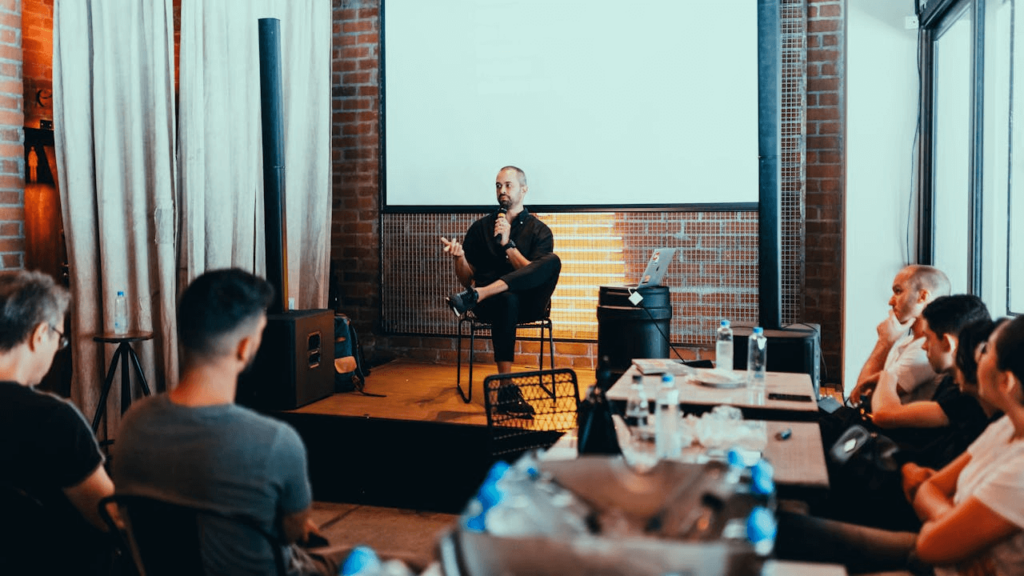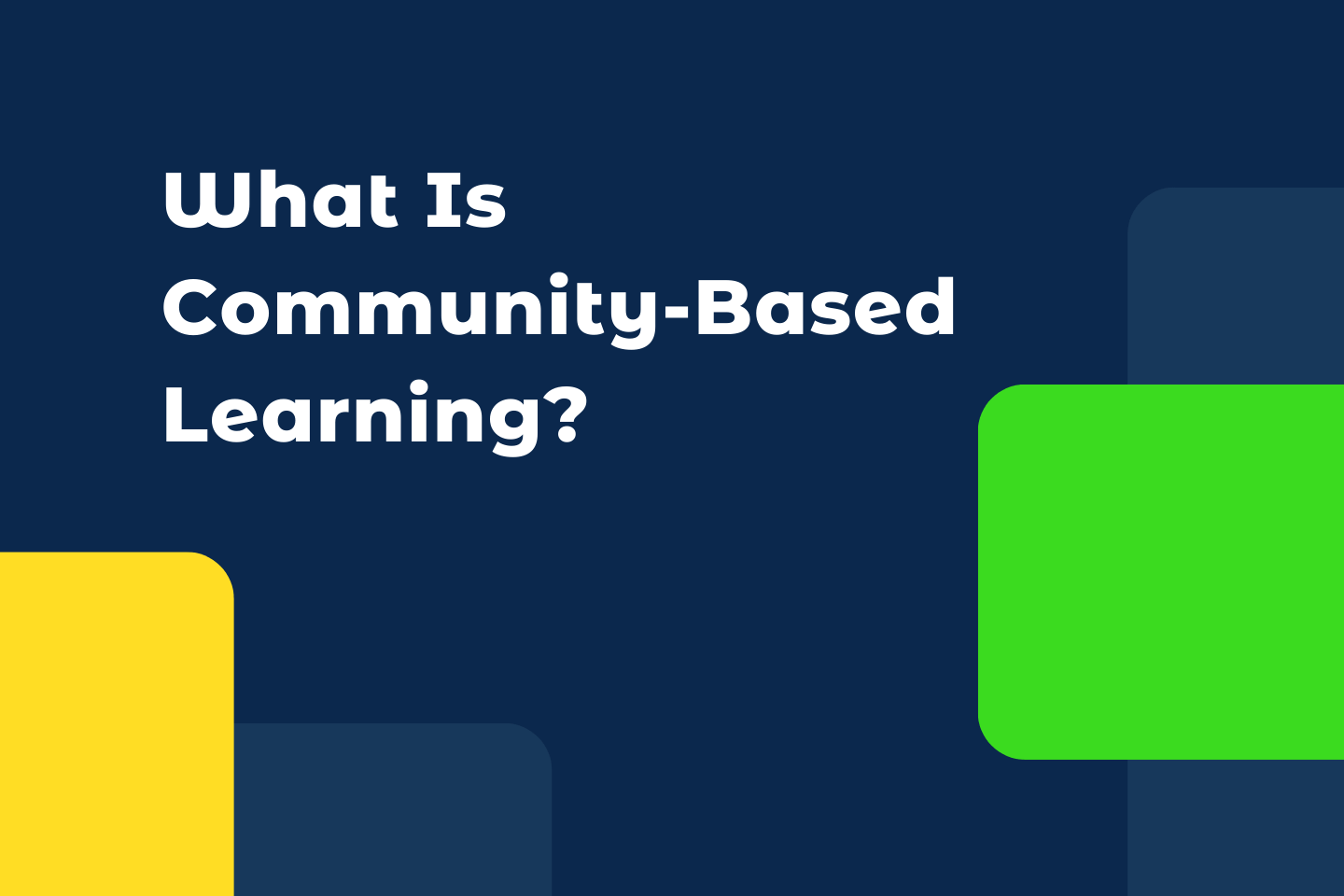Community-based learning is a hands-on approach that bridges the gap between the traditional coaching practice and local communities. It involves interactive methods like field experiences, collaborative projects, and direct involvement with community partners.
As coaches seek dynamic and impactful teaching methods, the appeal of community-based learning grows. Technological advancements now allow for virtual engagement, expanding learning opportunities globally.
This article delves into the essence of the community-based learning model, its advantages, and challenges, and provides practical strategies for its integration into coaching and educational contexts.
What Is Community-Based Learning?

Community-based learning is the practice of bringing people together to create educational opportunities. While there are many different ways to learn, the approach of community-based learning recognizes that there is knowledge and wisdom in the community, especially because of the diversity of members’ perspectives, practices, and experiences.
This learning experience is incredibly effective since it hinges on the notion that learning is not just an individual’s endeavor to receive information, but rather a collective experience fueled by interaction and relationships. It emphasizes the co-creation of knowledge and skills, enabling participants to learn from one another and grow together.
This collaborative environment encourages learners to engage actively with their peers, leading to a more enriched and nuanced understanding of the subjects at hand.
3 Types of Community-Based Learning Models

Let’s explore some models for structuring CBL to elevate your community.
1. Service Learning
Service learning involves community members coming together for service projects to support those in need. For instance, coaches could organize inspiring workshops or public speaking events in the community on topics such as personal growth and development.
2. Project-Based Learning
Project-based learning is all about hands-on experiences, where people involved get to flex different skills and disciplines. Coaches could encourage clients to collaborate on projects that align with their personal goals. This could involve volunteering in community organizations, organizing events, or working on creative projects together.
3. Experiential Learning
Experiential learning is about rolling up the sleeves and taking on new challenges. This approach comes in various flavors – internships, outdoor adventures, or cultural immersions. Imagine this: coaches orchestrating a cross-cultural exchange gig where people mingle with diverse cultures and hone new skills that are outside their comfort zone.
4 Benefits of Community-Based Learning for Coaches
Community-based learning can enrich coaching methods in a way that brings learning to life. When coaches embrace this approach, they foster a lively environment where learners not only absorb knowledge but also apply it creatively in real-world scenarios.
Keep reading to explore the special advantages coaches experience when they weave community-based learning into their practice.
1. Relationship Building
Unlike the traditional learning model, which often focuses on solitary study, community-based learning is all about building relationships. It fosters interactions that are crucial for personal growth and the creation of a supportive learning community.
2. Diverse Knowledge Sources
Traditional educational systems often focus on textbook learning, which can narrow the breadth of knowledge. In contrast, community-based learning sheds light on various types of knowledge, such as local stories, hands-on skills, and the wisdom of the community.
3. Socialization Alignment
We are inherently social creatures, and community-based learning aligns with our natural proclivity for relationship-building. In contrast to the traditional model, which often requires passive reception of information, community-based learning revolves around active engagement and learning through shared experiences.
4. Unlimited Global Access
The advancements in technology have expanded the reach of community-based learning to a global scale, unveiling an unlimited potential for cross-cultural interactions and learning opportunities that were previously inconceivable.
Incorporating Community-Based Learning into Coaching Practice

For coaches looking to integrate community resources into their work, the key is to engage with local organizations, businesses, and cultural institutions that align with their educational goals. It starts with thorough research to identify potential partners interested in collaborating.
Then, nurturing these relationships through meetings to explore mutual benefits is crucial. This often involves personalized communication, attending community events, and engaging with local networks and forums.
Creating partnerships with the community is significant as it opens up diverse learning opportunities and hands-on experiences. These collaborations provide access to resources such as local experts, facilities, and practical projects that can enhance educational programs.
Moreover, these partnerships enhance societal well-being by promoting shared learning and benefiting all parties involved. This mutually rewarding connection improves coaching practices, offering a comprehensive learning approach that extends beyond traditional academics.
6 Key Steps for Designing Community-Based Learning Experiences

If you’re ready to design a community-based learning experience for your clients, follow our step-by-step guide.
1. Explore the Needs and Interests of the Community
For a course to truly succeed, it must effectively address the pressing needs of your community. Conduct research tailored to your community to uncover the key challenges faced by members in your niche and identify the skills they aim to excel in.
Doing so will ensure that the course can cater to the specific needs of your community, making it a valuable investment they will be willing to pay for.
2. Set Learning Objectives
One key aspect of creating a community-focused learning journey is establishing clear and attainable learning goals. These goals should connect with the course material and the broader aims of community collaboration.
Well-crafted goals meet the SMART criteria: Specific, Measurable, Achievable, Relevant, and Time-bound. Working closely with community partners can help coaches identify goals that truly matter to learners and are relevant in real-life scenarios.
This approach ensures that the knowledge and skills acquired in the course are not only useful but also easily applicable.
3. Create Authentic Assessments
Another key aspect involves creating genuine assessments that not only assess theoretical comprehension but also the practical application of knowledge in real-world situations. Authentic assessments should mirror the intricate nature of tasks that learners can encounter beyond the coaching environment, offering chances for them to showcase their abilities in tangible ways.
These may involve hands-on projects, community-based problem-solving endeavors, or collaborative tasks with local entities.
4. Create the Course
Once the outline is finalized, proceed with gathering materials for your course. Upon completion, invite testers to assess the course content. You can choose a small group from your community for this. Guide them through the course lessons, assignments, and assessments. Request feedback on the following areas:
- The organization and progression of the course.
- The clarity of the lessons and any missing information.
- Any technical problems or areas of confusion.
- The overall user experience.
Then, incorporate the feedback to enhance the course before the launch.
5. Collaborate with Community Partners
Integrating a community-based learning approach into your coaching routine requires thoughtful planning and a collaborative mindset. Coaches can kickstart this process by building relationships with local community partners. Ensuring alignment among coaches, partners, and clients on the goals and execution of the community-based learning program is crucial.
Here’s how coaches can seamlessly weave CBL into their coaching practices:
- Instructional Connection. Establishing direct links between coaching materials and the community context is a powerful CBL method. Coaches can use local businesses or community initiatives as case studies to help the coaching clients apply concepts to their immediate environments.
- Community Integration. Connecting the client’s learning journey with real-world community experiences promotes deeper understanding. Coaches can enhance this connection by inviting local leaders or professionals to mentor a session or organizing visits to community projects, making the coaching content more relatable.
- Community Participation. For a more engaging experience, involving the community is essential. Collaborating with the community to address local challenges or promote social progress enhances the CBL journey, providing hands-on learning opportunities while contributing to community development.
6. Incorporate Reflection Opportunities
Structured reflection lies at the heart of a top-notch CBL program, guiding students to transform experiences into valuable learning moments. Coaches should weave reflective practices throughout the community journey – before, during, and after engagement. This cycle of reflection fosters ongoing learning and mindful application of newfound knowledge.
Here are some reflective activities you can embrace:
- Journaling: Encourage students to maintain a journal to record experiences, thoughts, and insights regularly.
- Reflective Assignments: Tasks where students analyze and place their experiences in broader societal, economic, or environmental contexts.
For key parties like coaches and community partners, reflection holds great significance. They should consistently evaluate and ponder over students’ progress in achieving learning goals, mastering skills like critical thinking, and handling emotions during the CBL journey.
Overcoming Challenges in Implementing Community-Based Learning

Navigating community-based learning isn’t a walk in the park for coaches. Aligning the program with community needs, handling logistics, and ensuring equal benefits for all participants can be tough. Learn how to tackle these challenges effectively and uphold CBL’s integrity and impact.
Meeting Learning Objectives
Flexibility is key when it comes to meeting learning objectives within a CBL framework. Traditionally rigid goals may require adaptation to embrace the organic flow of learning that CBL promotes. Coaches can adopt an adaptive learning approach, allowing the objectives to morph in response to the evolving community context.
This means setting core goals but remaining open to learning opportunities as they arise.
Additionally, it’s beneficial to regularly review and adjust the objectives in collaboration with the community partners to ensure they remain relevant and achievable.
Finding the Right Community Partners
To discover a community that enhances the learning journey, coaches should embark on thorough research and networking. By engaging in community events, joining local forums, and tapping into regional educational networks, valuable connections can be cultivated.
Once potential communities are pinpointed, investing time and genuine efforts into nurturing trust and understanding the mutual benefits of the partnership is crucial.
Building Relationships and Identifying Learning Opportunities
Building relationships proactively and identifying learning opportunities may require effort, but it’s a crucial step for the success of a CBL program. Coaches need to dedicate time to understanding the community, establish connections with its members, and collaborate with community leaders to develop mutually beneficial learning experiences.
This could involve joint planning sessions, participation in community meetings, and jointly identifying issues or projects suitable for CBL initiatives.
Embracing Learning Outside Your Comfort Zone
Learning outside your comfort zone can be challenging, but that’s where the most profound growth happens. Coaches play a crucial role in preparing learners for this journey by nurturing a growth mindset and highlighting the value of new experiences.
They should create a supportive environment where taking risks and facing failure is encouraged. Reflecting on these challenges can turn discomfort into valuable insights and personal growth. Coaches sharing their own stories of stepping out of their comfort zones can serve as a powerful teaching tool and motivator.
Embracing Community-Based Learning Experiences: Final Thoughts
Community-based learning brings a fresh perspective to coaching, connecting it to real-world scenarios. By building strong ties with community partners, blending education with community involvement, and encouraging self-reflection, coaches craft engaging learning spaces for clients.
Despite challenges like aligning goals and pushing comfort zones, the benefits of CBL—enhanced practical skills, community impact, and personal growth—far surpass the obstacles. Ultimately, CBL molds well-rounded individuals and cultivates collaborative efforts that uplift communities project by project.
